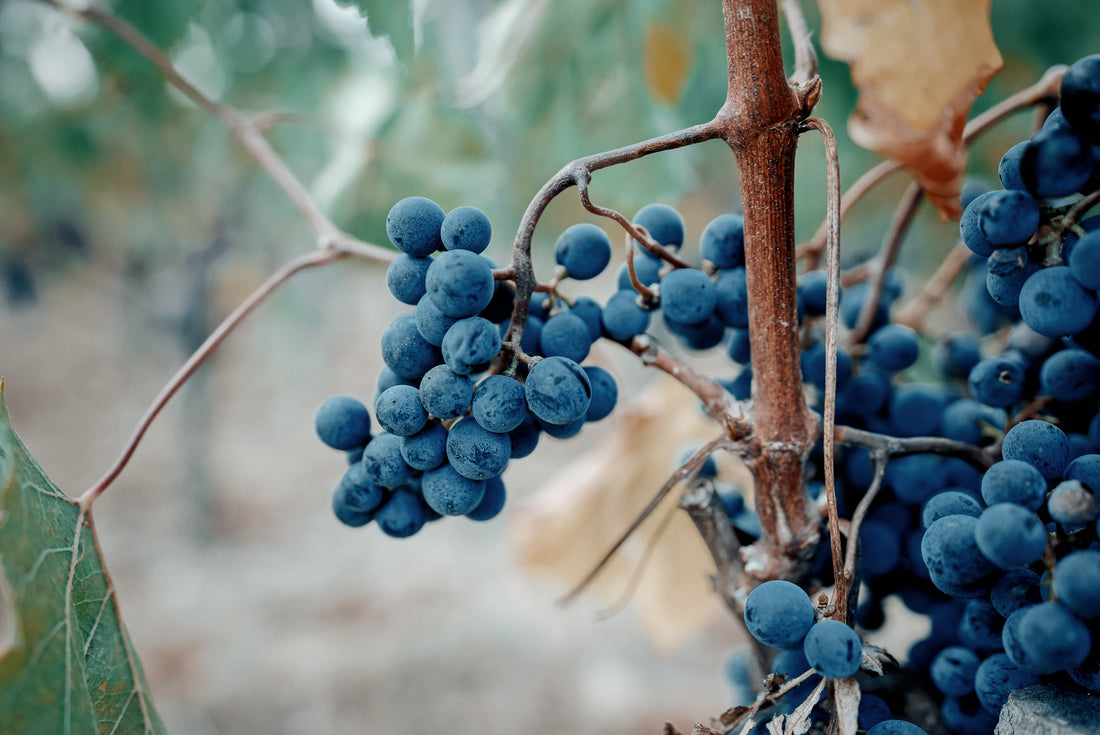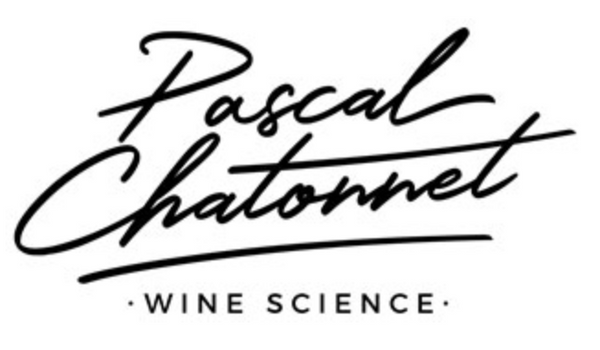
Copper toxicity in viticulture: myths and realities
There is a lot of talk about the copper content of vineyard soils and its impact on the vines and the life of the soil. The copper metal used in different forms and through different “boils” was developed at the end of the 19th century to fight against one of the worst pests of the vineyard: vine downy mildew (Plasmopara viticola). The discovery of the value of copper for the protection of the vineyard was made almost accidentally by Alexis Millardet. This professor of botany at the Faculty of Sciences of Bordeaux, during an outing in Médoc in October 1882, was amazed at the beautiful holding of the vines along the road, at Château Ducru-Beaucaillou in Saint-Julien-Beychevelle ( Médoc), at Nathaniel Johnston. He opened up about this observation to the estate manager, Ernest David (1845-1932), who told him that in Médoc it was customary to spread a mixture of copper sulfate and lime on the vine stocks in roadside to deter marauders who stole grapes. Alexis Millardet tried solutions against mildew at home, on a few vines, to observe their development. With his friend Ulysse Gayon, professor of chemistry at the Faculty of Sciences of Bordeaux, numerous laboratory experiments were applied in the field. They were authorized to work on the vines of Château Ducru-Beaucaillou in Saint-Julien and Château Dauzac in Labarde, both belonging to the merchant Nathaniel Johnston. The same experiences took place at Château Langoa at Monsieur Barton's in Saint-Julien, managed by Monsieur Cadeau, a former student of the National Agronomic Institute of Paris. The cupric mixture (“Bordeaux mixture”) was around 3 kg of copper sulfate and a third of quicklime in 100 liters of water. The experiments from 1883 to 1885 were conclusive and in 1886, downy mildew was controlled. It is interesting to point out that this discovery was also made by the Burgundians at the same time; sodium carbonate replaces calcium hydroxide in the “Burgundian mixture”.
From this time and until after the Second World War, winegrowers applied significant quantities to the vines, which could represent 5 to 50 kg/ha/year of copper metal! These quantities, repeated every year for several decades, could have locally created accumulations that could reach thresholds that were eminently toxic for the biological activity of the soil in general and for the vines themselves. But to explain the harmful effects of copper, it is not mainly the concentration of total copper in a soil (extraction by a chelating agent such as EDTA 0.01 mol/l at pH7 in ammonium acetate 1 mole /l) which counts but rather its bioavailability (copper extractable with calcium chloride 0.01 mole/l). From now on, the quantity of copper used each year can vary from 1.5 to 5 kg/ha in organic, biodynamic or conventional sustainable agriculture, or ten times less than before. The recent re-approval of copper now limits its use to 4 kg/ha/year over seven years. Démeter biodynamic certification limits it to 3 kg/ha/year.
The total copper content of wine-growing soil is on average around 14 mg/kg in France. But behind this lie great disparities, with maximum levels recorded sometimes very high on soils with a significant history (more than 500 mg/kg in Germany). However, these levels are only of relative importance since the toxicity of copper, to both vines and soil fauna, depends on its “bioavailability”.
What is bioavailability? In a soil, multiple interactions occur between copper and certain soil constituents (primarily clays and organic matter). As a result, only a small fraction of the total copper is “available”, that is to say likely to pass into the soil solution. First, the higher the soil pH, the less soluble the copper. Solubility increases considerably from pH 5 and decreases sharply from 7. Then, copper has a strong affinity for organic matter and to a lesser extent for clay. Soils with a high content of clay and organic matter (> 2%) and a normal or alkaline pH will therefore tend to store more copper.
The “bio-influenced” zone is located at the level of the rhizosphere which corresponds to the largest potential absorption zone. The easily exchangeable fraction is more or less bioavailable for the different living organisms present in the soil (vine roots, roots of grass plants, earthworms, soil microfauna, etc.). It must cross the membrane of these organisms, which can be done actively or passively. “Bioavailability depends on the organism considered and its absorption capacities… and its capacities to modify the availability in its environment”, explains Philippe Hinsinger of INRA in Montpellier (https://www.plan-deperissement- vigne.fr/sites/default/files/2018-01/2017_Hinsinger_Cuivre.Bdef_.pdf). Indeed, certain plant roots, for example, are capable of modifying by excreting exudates the characteristics of the soil around the roots, in particular its pH by maintaining it around neutrality (6.5-7.0). This “bio-influenced” zone at the level of the rhizosphere strongly impacts what is potentially absorbable by the plant by locally increasing more copper complexing factors (chelating agents).
On vines, despite sometimes high copper levels in vineyard soils, proven cases of phytotoxicity are few. The vine gets around the copper problem with an avoidance strategy. Except on sandy or granite soils, copper is not very mobile; the roots colonize more quickly the subsoil with little or no contamination, or the roots could reduce the bioavailability of copper in their rhizosphere by influencing, through their exudates, the rhizobiota. On the other hand, by competing for iron transporters in the roots, high copper levels can intensify the symptoms of iron chlorosis in calcareous soils.
The accumulation of copper impacts the ecological balance of soil micro- and macrofauna. However, at least below 600 mg/kg of total copper, copper does not induce, either literally or figuratively, sterilization of soils. However, it is certain that the combination of an acidic pH and a high copper content produces strong abiotic stress which causes significant selection and adaptation of the soil microbiota. Compared to other soils, vineyard soils most often have a lower and less diverse microbial biomass. Biological and biodynamic management nevertheless seem to compensate for some of these negative aspects by notably improving the diversity and quality of microbial networks. Biological management, while generally using more copper and even if quantitatively the biomass is not much more abundant, generates more cooperative and more resilient microbial networks. However, taking into account the impact of numerous factors, it is impossible to conclude more about the strict impact of the organic or biodynamic approach to vineyard management or that of permanent grass cover and reduction of soil. tillage, classic processes in this mode of exploitation, to really explain these results!
With regard to macrofauna, particularly earthworms, epigeal worms are clearly very sensitive to copper: their population and activity decrease significantly from 30 mg/kg total, a level common in wine-growing soils... Worms that work deeper (endogetic worms) are undoubtedly less impacted because copper migrates little in these horizons.
Claude and Lydia Bourguignons, the famous Burgundian “scientist specialists” in soil microbiology were called to the rescue (Revue du Vin de France, June 2018 114-117) to defend the copper singled out for the “toxicity” mentioned above -above. Their response as “scientists” is unfortunately (in their image, let us not be afraid of words) more due to the barnum that they have been able to develop in recent decades than to science. In the absence of contradiction in their speech, often founded but now based more at best on hackneyed clichés, or at worst on untruths (not to mention sometimes lies), the media couple does not hesitate to explain that it is purely and simply a conspiracy of multinational capitalist pesticide manufacturing firms. And to explain “that today, spraying is done strictly on the leaves and not on the ground as before and that at this level (3 kg/ha/year) the copper is completely consumed by the micro-organisms »… On the one hand, Claude Bourguignon seems to forget that in the fall the leaves fall to the ground and that this copper is not metabolized by micro-organisms but mainly fixed by the clay-humic complex of the soil. And Lydia bounces back by reminding that “the targeted metal is essential to living organisms and that deep plowing would be more dangerous than copper”. Certainly copper is useful; but it is in no way necessary to obtain well-functioning organisms to spray several kilograms per hectare of the famous metal which accumulates over the years... And with regard to the microbial biomass, as explained above, it is even exactly opposite.
It also means forgetting the contraindications of copper from an oenological point of view. This metal is relatively well eliminated from wine by alcoholic fermentation which insolubilizes and fixes the metal on the yeast walls; the high levels of copper identifiable in a finished wine (> 0.2 mg/l) therefore have more to do with contact with contaminating metallic material (bronze) than with viticultural practices. On the other hand, it is certain that the measurable doses on the grapes and in the juice are directly linked to those applied to the vines. Copper is measurable up to several tens of milligrams per liter. But from 1 mg/l, the oxidizability of the polyphenols in the must is increased; if the high copper content persists during the fermentation of white or rosé juices, the aromas sensitive to this phenomenon (in particular aromatic thiols) will be quickly and strongly reduced with an obvious impact on the organoleptic profile typical of certain grape varieties. Finally, the copper applied to the vine also modifies the natural yeast fermentation microflora (https://tel.archives-ouvertes.fr/tel-01537740/document) and therefore potentially the biochemical revelation of the grape aroma prescribers.
Copper is of course an essential element for the evolution of viticulture and it is certainly preferable to eliminate all synthetic organic fungicides with toxic, repro-toxic or mutagenic effects used for decades, than to call into question the use of this metal in the short term. Even if copper at less than 4 kg/ha certainly does not pose any toxicity problems on well-balanced soils (clay, pH, organic matter, microbiological activity), we should not bury our heads in the sand and deny certain evidence. . There is no point in accumulating this type of metal in the environment without control. Thus, all phytosanitary control practices, conventional, rational, organic or biodynamic, must aim to reduce its use without compromising the effectiveness of vineyard protection. The combination of copper in reasonable doses with other products that stimulate the natural defenses of the vine, whether plant preparations (horsetail, willow, essential oils of oregano, oranges, etc.) or minerals (silica, phosphonate salts), makes it possible to gain efficiency while reducing cumulative doses. The application of the principles of Biosynergy mentioned earlier, that is to say using all natural means, or not, but in any case all means respectful of the environment, thus allows us to work safely to build better the future, without turning a blind eye or invoking fallacious plots.
